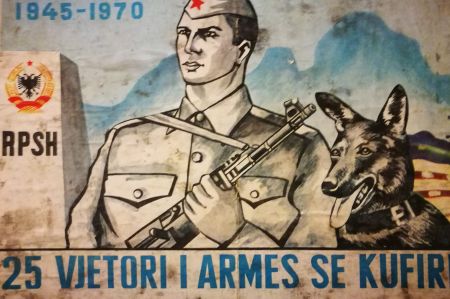Albania's bunker history - the Bunk'Art Museum Tirana
- Written by Portal Editor
Whenever the name of Albania falls in talks, two theses emerge, which we can not share without contradiction, because of our experiences during the travels through the country: "mafia structures in politics and economy" and "everywhere bunkers".
We also used our visit to Tirana to get a closer look at the second term "everywhere bunkers", because in Albania, especially between 1972 and 1984, about 200,000 of these bunkers came into being.
Russians into Czechoslovakia in 1968
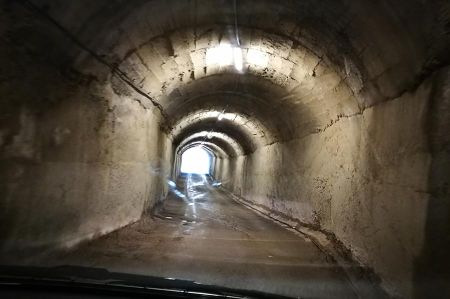 These bunkers were to serve the defense of the country in the event of an invasion by foreign troops, and so the pillbox bunkers, which are still visible today, together with other bunker buildings, were the most important military installations being built during the Communist regime in Albania. During the 1980s and 1990s, they dominated the landscapes in many places and are still to be seen today.
These bunkers were to serve the defense of the country in the event of an invasion by foreign troops, and so the pillbox bunkers, which are still visible today, together with other bunker buildings, were the most important military installations being built during the Communist regime in Albania. During the 1980s and 1990s, they dominated the landscapes in many places and are still to be seen today.
After Albania broke with the socialist countries of Eastern Europe in 1961, and had left the Warsaw Pact as a reaction and protest to the invasion of the Russians into Czechoslovakia in 1968, Albania was fearing that Albania might be occupied by former communist allies.
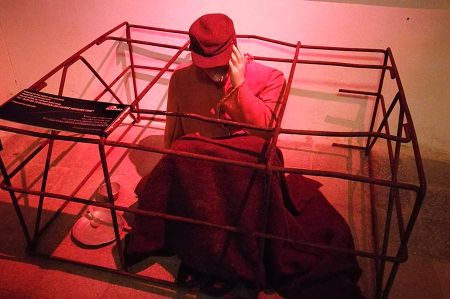 In addition to the revisionists in the East, the Albanians had long been afraid of the American and British imperialists in the West. All the neighbors were regarded as enemies in Albania: with Greece in the South they were still in a state of war, with the Yugoslavs in the north the relationship was also very tense, and Italy in the West on the other side of the Adriatic had attacked Albania in 1939. Over the sea, in the 1950s, agents and anti-Communist resistance fighters, who were supported by the USA and Great Britain, came back again and again. The government under Enver Hoxha considered it imperative to prepare for a possible invasion, not only in times of war itself.
In addition to the revisionists in the East, the Albanians had long been afraid of the American and British imperialists in the West. All the neighbors were regarded as enemies in Albania: with Greece in the South they were still in a state of war, with the Yugoslavs in the north the relationship was also very tense, and Italy in the West on the other side of the Adriatic had attacked Albania in 1939. Over the sea, in the 1950s, agents and anti-Communist resistance fighters, who were supported by the USA and Great Britain, came back again and again. The government under Enver Hoxha considered it imperative to prepare for a possible invasion, not only in times of war itself.
"Defending the Fatherland is a duty more important than all other duties." - Albanian state propaganda in the 1970s
Every centimeter of Albanian soil must be defended
 The person council about Enver Hoxha, whose paranoia steadily increased for fear of foreign intrigues and conspiracy, grew ever stronger. Foreign, especially Western influences were openly combated in all spheres of life, and especially in culture; The military, including the defense minister Beqir Balluku, who had prepared plans together with the Chinese with the target to retreat into the mountains in an attack. Hoxha, on the other hand, argued that every centimeter of Albanian soil must be defended.
The person council about Enver Hoxha, whose paranoia steadily increased for fear of foreign intrigues and conspiracy, grew ever stronger. Foreign, especially Western influences were openly combated in all spheres of life, and especially in culture; The military, including the defense minister Beqir Balluku, who had prepared plans together with the Chinese with the target to retreat into the mountains in an attack. Hoxha, on the other hand, argued that every centimeter of Albanian soil must be defended.
Hoxha's goal was to build a bunker for four Albanians each, a total of 750,000 units. It is unclear whether this number has been reached. The exact number is unknown. Estimates ranged from 350,000 bunker buildings to 745,145 bunkers and more. It was noted on a 2014 list that until 1983, just before the end of the main building phase, only 173,371 fortifications had been erected.
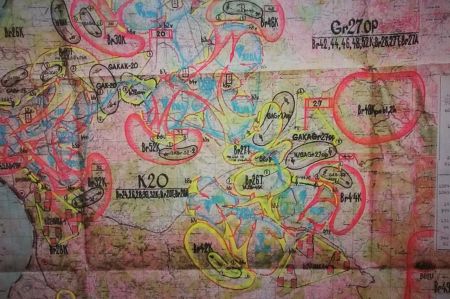 These many bunkers, a legacy which still characterizes the country to this day, underscored the xenophobic party idiocy of the permanent danger of foreign countries and the isolation policy of the country. Above all, it was an expensive challenge for the weak, underdeveloped and self-sufficient Albanian economy. The necessary reinforced concrete could have been urgently needed in house construction or other infrastructure projects.
These many bunkers, a legacy which still characterizes the country to this day, underscored the xenophobic party idiocy of the permanent danger of foreign countries and the isolation policy of the country. Above all, it was an expensive challenge for the weak, underdeveloped and self-sufficient Albanian economy. The necessary reinforced concrete could have been urgently needed in house construction or other infrastructure projects.
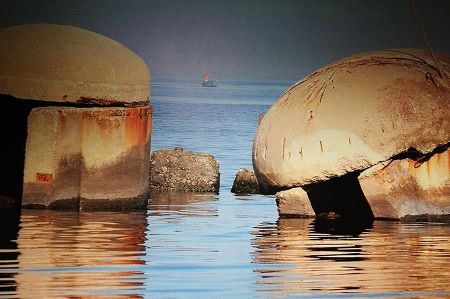 With the opening of two Bunker museums, a different angle of view on the dark side of the history of Albania is possible because two important bunkers were opened to the public in Tirana, as the country is not only increasingly exploring its communist past, but also presents cultural history to its own people.
With the opening of two Bunker museums, a different angle of view on the dark side of the history of Albania is possible because two important bunkers were opened to the public in Tirana, as the country is not only increasingly exploring its communist past, but also presents cultural history to its own people.
"We hope to help the Albanians reconcile themselves with their own history and their own past," said Carlo Bollino, curator of Bunk'Art. "There can be no awareness of your own skill and confidence in the future without knowing the grounds in which your own roots are planted."
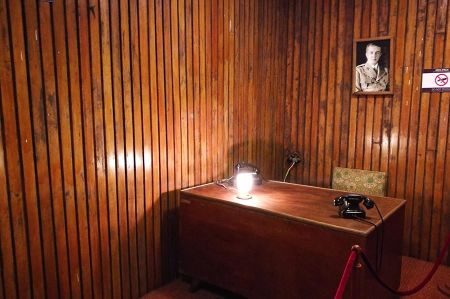 With the Bunk'Art Museum built as shelter for Enver Hoxha and his supporters on the edge of the capital Tirana, a presentation of his own story has been created in the huge bunker, which can only be uniquely described.
With the Bunk'Art Museum built as shelter for Enver Hoxha and his supporters on the edge of the capital Tirana, a presentation of his own story has been created in the huge bunker, which can only be uniquely described.
Just the access to the official ticket office is only possible by the passage of a 200-meter-long tunnel, accompanied by terrifyingly grueling music, which can certainly act as a threat. Then we climb into the five-storey bunker through thick contrasts (four door systems) into the lobby - right at the beginning of the event, a panel that warns the visitors not to panic, since the lights might fail at any time.
Some of the countless rooms are used to tell the story of the time of the dictator Hoxha through photographs, objects and documents. Other rooms are used for art exhibitions, but most are completely empty. In the heart of the bunker is an assembly hall, which was installed for the Hoxha government in the bunker, but now is used for jazz concerts.
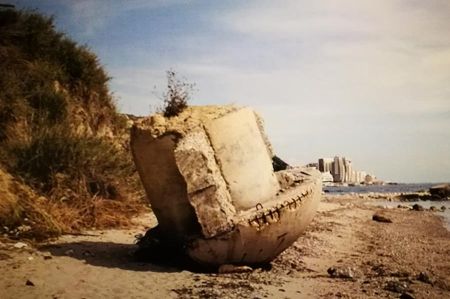 What horrible institutions, which show once more how far the human brain can drive, if there is no one to stop.
What horrible institutions, which show once more how far the human brain can drive, if there is no one to stop.
The Entry to the parking inside is due to the tunnel not possible for all vehicles, please be careful!
Here are the cordinates (the link is directly leading to google maps)
41°20'59.7"N 19°51'37.4"E BunkÁrt Museum
41.349924, 19.860395
Please read as well:
Hike to the Pellumbas Cave - also called Pshella e Zi
Ascent to Petrela - a coffee break in the castles garden
-
 BunkÀrt Museum in Tirana
BunkÀrt Museum in Tirana
BunkÀrt Museum in Tirana
BunkÀrt Museum in Tirana
-
 BunkÀrt Museum in Tirana
BunkÀrt Museum in Tirana
BunkÀrt Museum in Tirana
BunkÀrt Museum in Tirana
-
 BunkÀrt Museum in Tirana
BunkÀrt Museum in Tirana
BunkÀrt Museum in Tirana
BunkÀrt Museum in Tirana
-
 BunkÀrt Museum in Tirana
BunkÀrt Museum in Tirana
BunkÀrt Museum in Tirana
BunkÀrt Museum in Tirana
-
 BunkÀrt Museum in Tirana
BunkÀrt Museum in Tirana
BunkÀrt Museum in Tirana
BunkÀrt Museum in Tirana
-
 BunkÀrt Museum in Tirana
BunkÀrt Museum in Tirana
BunkÀrt Museum in Tirana
BunkÀrt Museum in Tirana
-
 BunkÀrt Museum in Tirana
BunkÀrt Museum in Tirana
BunkÀrt Museum in Tirana
BunkÀrt Museum in Tirana
-
 BunkÀrt Museum in Tirana
BunkÀrt Museum in Tirana
BunkÀrt Museum in Tirana
BunkÀrt Museum in Tirana
-
 BunkÀrt Museum in Tirana
BunkÀrt Museum in Tirana
BunkÀrt Museum in Tirana
BunkÀrt Museum in Tirana
-
 BunkÀrt Museum in Tirana
BunkÀrt Museum in Tirana
BunkÀrt Museum in Tirana
BunkÀrt Museum in Tirana
-
 BunkÀrt Museum in Tirana
BunkÀrt Museum in Tirana
BunkÀrt Museum in Tirana
BunkÀrt Museum in Tirana
-
 BunkÀrt Museum in Tirana
BunkÀrt Museum in Tirana
BunkÀrt Museum in Tirana
BunkÀrt Museum in Tirana
-
 BunkÀrt Museum in Tirana
BunkÀrt Museum in Tirana
BunkÀrt Museum in Tirana
BunkÀrt Museum in Tirana
-
 BunkÀrt Museum in Tirana
BunkÀrt Museum in Tirana
BunkÀrt Museum in Tirana
BunkÀrt Museum in Tirana
-
 BunkÀrt Museum in Tirana
BunkÀrt Museum in Tirana
BunkÀrt Museum in Tirana
BunkÀrt Museum in Tirana
-
 BunkÀrt Museum in Tirana
BunkÀrt Museum in Tirana
BunkÀrt Museum in Tirana
BunkÀrt Museum in Tirana
-
 BunkÀrt Museum in Tirana
BunkÀrt Museum in Tirana
BunkÀrt Museum in Tirana
BunkÀrt Museum in Tirana
-
 BunkÀrt Museum in Tirana
BunkÀrt Museum in Tirana
BunkÀrt Museum in Tirana
BunkÀrt Museum in Tirana
-
 BunkÀrt Museum in Tirana
BunkÀrt Museum in Tirana
BunkÀrt Museum in Tirana
BunkÀrt Museum in Tirana
-
 BunkÀrt Museum in Tirana
BunkÀrt Museum in Tirana
BunkÀrt Museum in Tirana
BunkÀrt Museum in Tirana
-
 BunkÀrt Museum in Tirana
BunkÀrt Museum in Tirana
BunkÀrt Museum in Tirana
BunkÀrt Museum in Tirana
-
 BunkÀrt Museum in Tirana
BunkÀrt Museum in Tirana
BunkÀrt Museum in Tirana
BunkÀrt Museum in Tirana
-
 BunkÀrt Museum in Tirana
BunkÀrt Museum in Tirana
BunkÀrt Museum in Tirana
BunkÀrt Museum in Tirana
-
 BunkÀrt Museum in Tirana
BunkÀrt Museum in Tirana
BunkÀrt Museum in Tirana
BunkÀrt Museum in Tirana
-
 BunkÀrt Museum in Tirana
BunkÀrt Museum in Tirana
BunkÀrt Museum in Tirana
BunkÀrt Museum in Tirana
-
 BunkÀrt Museum in Tirana
BunkÀrt Museum in Tirana
BunkÀrt Museum in Tirana
BunkÀrt Museum in Tirana
-
 BunkÀrt Museum in Tirana
BunkÀrt Museum in Tirana
BunkÀrt Museum in Tirana
BunkÀrt Museum in Tirana
https://www.alaturka.info/en/albania/tirana/3813-albania-s-bunker-history-the-bunk-art-museum-tirana#sigProIdc3225d3527
